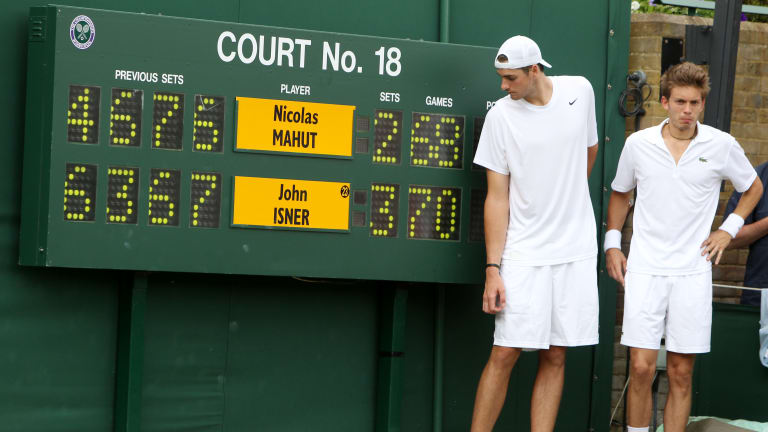“7 Days in Hell,” HBO’s newest original special, is a tennis mockumentary that has everything: umpires dropping dead, on-court sex scenes and excessive drug use. The film takes place during a fictional 2001 Wimbledon first-round match—“The longest match ever played”—that turns into an endless marathon, slowly chugging beyond 100 games-all in the fifth set. But the HBO comedy doesn’t have to look far for inspiration when its backdrop is the absurdity of never-ending fifth sets.
Marathon Men: Endless five-setters rightly mocked by '7 Days in Hell'
By Jul 22, 2015Madrid, Spain
Novak Djokovic loses third consecutive match, to Matteo Arnaldi in Madrid
By Apr 26, 2025Your Game
Racquet Review: Head Radical Pro 2025
By Apr 26, 2025Social
Taylor Townsend confirms she will be ‘front and center' at Roland Garros following concussion in Miami
By Apr 26, 2025Lifestyle
Looking for love? Madison Keys says there are plenty of fish in the sea
By Apr 26, 2025Madrid, Spain
Novak Djokovic vs. Matteo Arnaldi: Where to Watch, Madrid Preview, Betting Odds
By Apr 26, 2025Ranking Reaction
How Jessica Pegula and Coco Gauff can pass Iga Swiatek for the No. 2 ranking in Madrid
By Apr 25, 2025Pick of the Day
Madrid Open Betting Preview: Joao Fonseca vs. Tommy Paul
By Apr 25, 2025Lifestyle
Iga Swiatek shares first look at new Lancôme campaign
By Apr 25, 2025Madrid, Spain
"It’s being a complicated injury": Paula Badosa forced to delay 2025 clay debut with back issue
By Apr 25, 2025Marathon Men: Endless five-setters rightly mocked by '7 Days in Hell'
The HBO mockumentary is ridiculous, but begs the question, are ti
Published Jul 22, 2015
Advertising

Marathon Men: Endless five-setters rightly mocked by '7 Days in Hell'
© AP